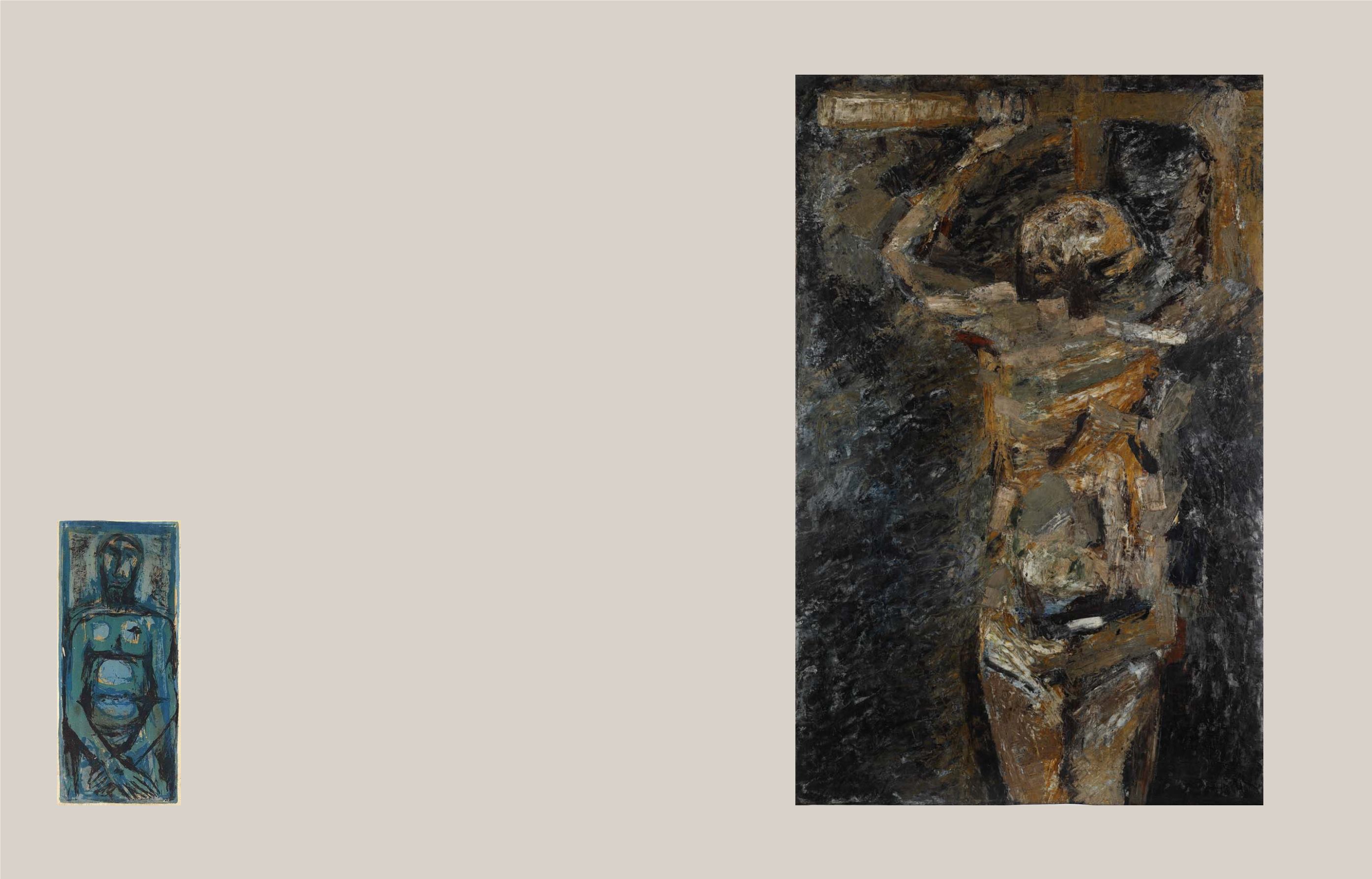

108
109
The Christian theme of the present lot is an unusual choice of
subject for Tyeb Mehta. In 1959, Mehta had moved to London
and would spend the next five years there.
Crucifixion
, painted
in 1959, is from his time in England, which was in the throes
of the post‒war atmosphere of angst in Europe. But for Mehta
personally, this was “a period of considerable rejuvenation.
Among the works of major artists, Tyeb was influenced by Francis
Bacon whose consciousness of anguished humanity expressed
in grotesque imagery made an impact on him.” (Yashodhara
Dalmia,
Tyeb Mehta: A Triumph of Vision
, New Delhi: Vadehra
Art Gallery, 2011, p. 7) In subject matter too, perhaps his unusual
choice reflects the influence of Christian themes of resurrection
and redemption that were predominant at the time.
The element of human suffering that was the defining essence of
Mehta’s bulls, rickshaw pullers and falling figures which he would
begin painting in 1965, is already palpable in this work. Mehta’s
life was indelibly marked by the Partition. The sectarian violence
remained the underlying element in his oeuvre. In its depiction
of the crucified Christ figure, the present lot evokes notions of
reigned‒in violence which Tyeb sought to present throughout
his career. During his time in Europe, Mehta was also drawn to
the writings of Camus and Sartre, and the notion of the Absurd,
which were so urgently explored by artists and writers in the
post‒war climate. Perhaps Mehta found a co‒relation in India’s
own struggle for Independence.
Mehta’s impasto‒laden brushwork from this time, as seen in the
present lot, “was typified by a direct rendering of experience
on the surface. His paintings in sombre tones could loosely be
termed expressionistic and articulated the fate of individuals
who were in some way cornered by fate. The thickly stroked
paint would layer the surface with a heavy patina of disquiet... A
compressed battle would ensue also between the figure and the
space surrounding it...” (Dalmia, p. 5)The figure of Christ provides
the ideal subject matter for Mehta to explore his own ideas of
disquiet, and that moment of tension just before violence occurs
which embodies the fundamental core of his art.
PROPERTY FROM THE FAMILY OF TYEB MEHTA
52
TYEB MEHTA
(1925 ‒ 2009)
Crucifixion
Signed and dated 'Tyeb 59' (lower left)
1959
Oil on canvas
54.25 x 35.25 in (138.1 x 89.7 cm)
Rs 4,00,00,000 ‒ 6,00,00,000
$ 634,925 ‒ 952,385
PROVENANCE
Gifted by the artist to his daughter
PUBLISHED
Ranjit Hoskote, Ramachandra Gandhi et al.,
Tyeb Mehta: Ideas Images
Exchanges
, New Delhi: Vadehra Art Gallery, 2005, p. 55 (illustrated)
Tyeb Mehta,
Christ
, 1958
Reproduced from Mortimer Chatterjee and Tara
Lal,
The TIFR Art Collection
, Mumbai: The Tata
Institute of Fundamental Research, 2010, p. 126
Tyeb Mehta worked with a Christian theme
on only one occasion, other than the
present lot. This lithograph of a Christ figure
was made when Bal Chhabda invited some
artists to explore this medium in 1958‒59.


















